Meet the Newest Members of the Tandon Family
The NYU Tandon School of Engineering is constantly evolving and growing, and our new faculty members are an important part of that process. Read on to find out more about them and how they're helping us harness the power of science and technology to improve the world.
New NYU Tandon Faculty:
- Amber Benezra
- Tega Brain
- Eugene Callahan
- Yanir Maidenberg
- Tom Marzetta
- Ludovic Righetti
- David Shimko
- Paul Torrens
Amber Benezra
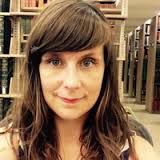
When you picture an engineering school faculty member, someone like Industry Assistant Professor Amber Benezra may not come immediately to mind. With degrees in literary and cultural studies, creative writing, media studies, and sociocultural anthropology, Benezra — who teaches and researches in Tandon’s Department of Technology, Culture and Society — embodies the multidisciplinary, collaborative, and dynamic nature of modern engineering.
She works closely with the scientists and biomedical engineers studying gut microbiota — the tens of trillions of microorganisms that live in the human digestive system. “When you look at the big picture, you can see why so many disciplines are involved,” Benezra, who has served as a fellow at the International Centre for Diarrhoeal Disease Research in Bangladesh and a researcher at the Washington University School of Medicine’s Center for Genome Sciences and Systems Biology, among other posts, explains. “Think about some of the factors that can affect the microorganisms in your gut: whether or not you’re living in poverty without an efficient sewage system, what medications you’re taking, the quality of the foods available to you, and even who you kiss. That’s why collaborative social and biological studies can be so fruitful.” Biological and social scientists alike have a stake in issues of global health and the dynamics of human relationships, she asserts, and studying the microbial world provides a new window into our rich biological and cultural diversity.
Benezra will be directing her department’s undergraduate Science and Technology Studies (STS) program and will be teaching an interdisciplinary class related to ethnography. “I want future engineers to realize why these topics matter and to understand that their end products — whether they be computer programs or bridges — will ultimately affect real people,” she concludes.
Tega Brain
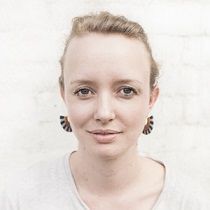
Industry Assistant Professor Tega Brain of Tandon’s Department of Technology, Culture, and Society works at the intersection of art, ecology, and traditional engineering, inspiring journalists to pen such unusual headlines as “Eccentric Wi-Fi Routers Put the ‘Fun’ in Functional Art,“ “Unfitbits: How To Trick Your Fitbit Into Thinking You're Working Out But You're Not,” and “Love Is in the Armpit at New York's Smell Dating.”
Those compelling snippets refer, respectively, to projects in which she: set up wireless networks that are influenced by the phase of the moon and other environmental systems; strapped Fitbits onto drills or pendulums to simulate activity data; and ran a dating service where participants selected their dates by sniffing each other’s well-worn T-shirts.
While seemingly fanciful, her work, which she characterizes as “eccentric engineering,” serves to illustrate important concepts. The wireless-router installation, called “Being Radiotropic,” examines how contemporary human behaviors are shaped by electromagnetic landscapes and signal topographies and asks how we might redesign wireless infrastructures in response. “Unfitbits” is intended to make viewers more aware of how commercially available devices allow companies to track our movements and monetize the data. “Smell Dating” explores the science of pheromones, encouraging users to trust their subconscious intuition rather than succumb to the preconceptions and prejudices that arise when presented with photos on a typical dating website.
Breaking preconceptions and prejudices is something of a mission for Brain, who will be teaching creative coding and researching ways in which emerging technologies can be used as a means of artistic expression. “Science and engineering must take into consideration things like function and efficiency,” she explains. “Art doesn’t have those constraints, so it provides a space where the politics and the assumptions baked into our technologies can be explored, unpacked and questioned.”
Eugene Callahan
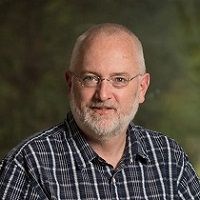
A conversation with Industry Associate Professor Eugene Callahan can touch upon such wide-ranging topics as the filming of the Lord of the Rings franchise to personal finance to the importance of making sure no student gets lost in a barrage of rapid-fire technical information.
Callahan, who holds degrees from the London School of Economics and Political Science and from Cardiff University, is an expert in agent-based modeling — a method of simulation in which autonomous entities called agents make decisions individually, rather than collectively, on the basis of a set of rules. (Hence, the Lord of the Rings discussion, since the computer-generated figures in the battle scenes were modeled in that manner, resulting in realistically chaotic action.)
The matter of personal finance arose because prior to his return to academia, Callahan, who has also taught at SUNY Purchase and St. Joseph’s College, worked as a software developer for more than two decades and was a creator of Managing Your Money, one of the first commercially available personal finance programs, which hit the market well before the now-ubiquitous Quicken.
As a member of the Department of Computer Science and Engineering, Callahan will be teaching a graduate course in algorithms and an undergraduate offering in discrete mathematics. The author of the 2002 volume Economics for Real People, he excels at explaining complex technical topics to a lay audience. “I believe strongly that no student should be left behind during a class, so I make every effort to convey information clearly and concisely,” he says.
Callahan looks forward to being at a major research university and collaborating with his new colleagues. “Everyone thinks that programming is a solitary pursuit,” he explains. “But it’s very useful to be able to run down the hall and bounce ideas off each other.”
Yanir Maidenberg
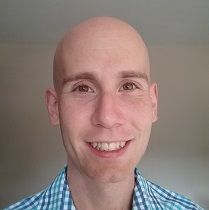
Before joining Tandon’s Department of Chemical and Biomolecular Engineering, Industry Assistant Professor Yanir Maidenberg held posts at Touro College, the City University of New York, the University of Redlands, the Stevens Institute of Technology, the Cooper Union, and Manhattan College, among other schools. During the course of his time in academia, he has formulated a core teaching philosophy: Students learn best by doing and by helping others learn. His courses will thus provide plenty of opportunity for hands-on, collaborative projects.
Maidenberg, whose areas of expertise include surfactants and polymers dynamics and characterization, emulsion and colloidal science, and formulation engineering, will be teaching a senior design course in which he envisions students planning a chemical manufacturing facility. “By the time they’re done I want them to feel comfortable speaking and collaborating with anyone, including the architects and other non-scientists who are always involved in an undertaking like this,” he explains. “When they get out into the real chemical engineering workforce, that skill will be invaluable.” Maidenberg himself has ample real-world experience; he has also worked as a senior scientist at industry giant Unilever, where he managed all nanoparticle-based projects in the research division and developed innovative delivery protocols that were incorporated into the company’s consumer products.
Maidenberg currently makes his home on Staten Island but welcomes the opportunity to teach in Brooklyn. “Between my wife and me, we’ve lived in all five boroughs,” he says, “and while we love New York City as a whole, there’s something very exciting about Brooklyn’s burgeoning technology and engineering scene.” Now the father of a three-year-old and a newborn, he also appreciates Tandon’s special position in the city’s educational landscape. “Like many of the School of Engineering’s current students, I was the first in my immediate family to attend college,” he explains. “So I share that important bond with much of the student body and admire the ethos that makes Tandon a diverse and welcoming place to learn.”
Tom Marzetta
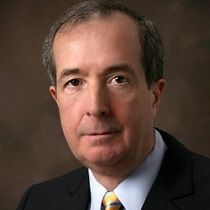
If you are active in the field of wireless communications, chances are that you might recognize the name of Tandon’s newest distinguished industry professor, Tom Marzetta, renowned for originating Massive MIMO (Multiple-Input Multiple-Output), one of the cornerstones of fifth generation wireless technology.
Massive MIMO utilizes numerous small, individually controlled, low-power antennas to direct streams of information, selectively and simultaneously, to many users. This confers spectral efficiency orders of magnitude greater than that experienced in 4G service; high-quality service throughout the cell; simplicity and scalability; and stellar energy efficiency.
Marzetta developed the concept of Massive MIMO to address the limitations of the original point-to-point MIMO. During his 22 years at Bell Labs, he directed the Communications and Statistical Sciences Department within the former Mathematical Sciences Research Center, and was elected a Bell Labs Fellow.
Marzetta — who is also an IEEE fellow and whose other honors include the 2015 IEEE Stephen O. Rice Prize, the 2015 IEEE W. R. G. Baker Award, and the 2013 IEEE Guglielmo Marconi Prize Paper Award — had not set out to revolutionize mobile communications when he graduated with a Ph.D. in electrical engineering from MIT in 1978. He began his career that year in the field of petroleum exploration at Schlumberger-Doll Research. There he met his future wife, Ingrid Carlbom, a computer scientist and now an Uppsala University professor emeritus, who recently founded a start-up that produces a decision support solution for the diagnosis and prognostication of prostate cancer from tissue samples.
After nine years in the petroleum business, Marzetta moved to the defense industry, spending eight years at Nichols Research Corporation, to work on radar signal processing and video motion detection. “My research experience in three different industries enables me to tackle new problems from several points of view at once.”
Marzetta, who will be working closely with fellow faculty members at NYU WIRELESS, welcomes his latest move, to academia. “The scope of research problems at a university is much wider than that of any industrial lab. And being at NYU gives me a chance to help shape a new generation of engineers."
Marzetta’s students, in turn, will have the opportunity this fall to study Massive MIMO with the lead author of the recently published book Fundamentals of Massive MIMO.
Ludovic Righetti
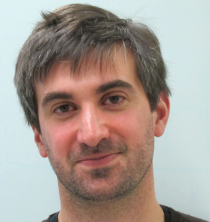
Early in his career, Ludovic Righetti was acknowledged as one of the leading young roboticists in the world. Now affiliated with both the Department of Mechanical and Aerospace Engineering and the Department of Electrical and Computer Engineering at NYU Tandon, he will be conducting research that seeks to answer some of his field’s major questions: What algorithms will allow for a robot to walk without falling, grasp objects without breaking them, and work safely around human beings?
Righetti, who led the Movement Generation and Control group at Germany’s highly regarded Max Planck Institute for Intelligent Systems before coming to Brooklyn, is seeking ways to ensure that robots become more autonomous and efficient over time by developing new algorithms at the intersection of optimal control and machine learning.
“Autonomous is a better description than artificially intelligent,” he explained. “The concept of intelligent robots as they’re depicted in popular culture sets up unrealistic expectations and unnecessary fears.”
Righetti, who earned his doctoral degree from Ecole Polytechnique Fédérale de Lausanne less than a decade ago, has already garnered multiple honors, including the Heinz Maier-Leibnitz-Preis from the German Research Foundation and the IEEE Robotics and Automation Society Early Career Award.
While he has received plenty of attention in the press for those laurels, he has worked in his lab with someone who has arguably gotten even more attention from journalists: Athena — a bipedal robot designed to move on rough terrain and help in disaster response situations. In 2014 Athena, sporting a pair of high-topped red sneakers, flew from Los Angeles to Germany to be refined. Reporters, who flocked to the airports at Los Angeles and Frankfurt, noted that Athena was the first humanoid robot ever to fly on a commercial jet using its own ticket. While reporters may not have gathered at JFK to herald Righetti’s arrival, the Tandon community is every bit as excited that he is now here.
David Shimko
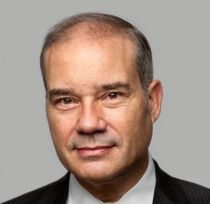
David Shimko’s career has included stints in both the financial industry and academia. “Academia teaches you to be rigorous,” he says, “and industry teaches you to be relevant.”
Before coming to Tandon, where he is now a full industry professor, Shimko held posts at such iconic companies as JPMorgan, where he was VP and Head of Commodity Derivatives & Credit Risk Management Research, and Bankers Trust, where his titles included Principal and Head of Risk Management Advisory. He also co-founded his own independent risk management consulting firm, Risk Capital; presided over Asset Deployment LLC, a company that was issued multiple patents for products that enhanced returns on illiquid assets; served as president and CEO of CreditCircle, a startup dedicated to providing low cost borrowing by using social networks to evaluate a person's credit-worthiness rather than numerical algorithms; and was named director of Novantas, which provides analytic advisory services and technology solutions to global financial institutions.
Add to that teaching duties at the University of Southern California and Harvard Business School, and Shimko has a keen eye for what students need to learn in order to be a success in the workforce. An engineering school, he asserts, is a stellar proving ground.
“Engineers are trained like applied scientists,” he explains. “They embrace the rigor of the scientist’s research but also know how to apply the research to find actionable solutions to real problems. That’s important because when you’re working for an employer, you actually need to be able to value a contract or a company, not merely opine on some theory of valuation.”
As the financial industry evolves, Shimko says, Tandon’s Department of Finance and Risk Engineering is keeping pace. “It’s not enough to be generalist these days,” he declares. “There is a lessening need for traditional MBAs and more of a need for corporate finance programs like ours, which are taught in a totally different way: quantitative, computational, data-oriented, and very much applied on a practical level.”
His students will gain an innate understanding of risk and its importance in the corporate decision-making process and will be equipped to work in a variety of settings, including banks, trading companies, and nonfinancial corporations. “Here at an engineering school, they’re not afraid of coding or differential equations,” he says, “and that will make them very valuable out in the industry.”
Paul Torrens
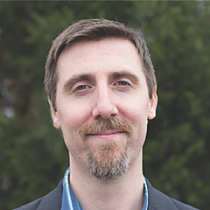
Paul Torrens, a Professor in Tandon's Department of Computer Science and Engineering who is also affiliated with NYU’s Center for Urban Science and Progress (CUSP), remembers a time when exploring complex urban systems and studying the intricacies of how humans interact with their environment required researchers to go out and collect data through direct observation. “Graduate students might be sent to a particular intersection with a pen and notebook to record how many cars passed through in a given period,” he says, “or to a park to watch how people responded to various elements of the landscape.”
Now, however, with the rise of the geographic information system (GIS), enormous amounts of spatial and geographic data are being generated autonomously — providing scientists with fresh insights into a plethora of important questions: how best to evacuate an area in the case of a natural disaster, help autonomous cars avoid pedestrians, or get people across busy streets safely, for example.
Torrens, whose laurels include a National Science Foundation Faculty Early Career Development Award and a Presidential Early Career Award for Scientists and Engineers, develops and applies computer-based modeling and simulation tools that make possible all those advances. “Spatial engineering represents the convergence of social science, environmental science, and computing,” he explains, “and as the world becomes increasingly urbanized — and cities must become smarter, more interconnected, cleaner, and safer — the field is growing in importance.”
His students, he expects, will be equipped to work in a variety of settings and solve a range of pressing societal problems. “Geographic information systems are in everything now, from drones to cell phones to industrial control systems, and whether we realize it or not, we rely on them every day,” Torrens says.




